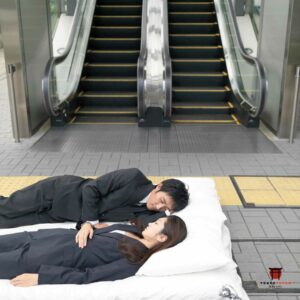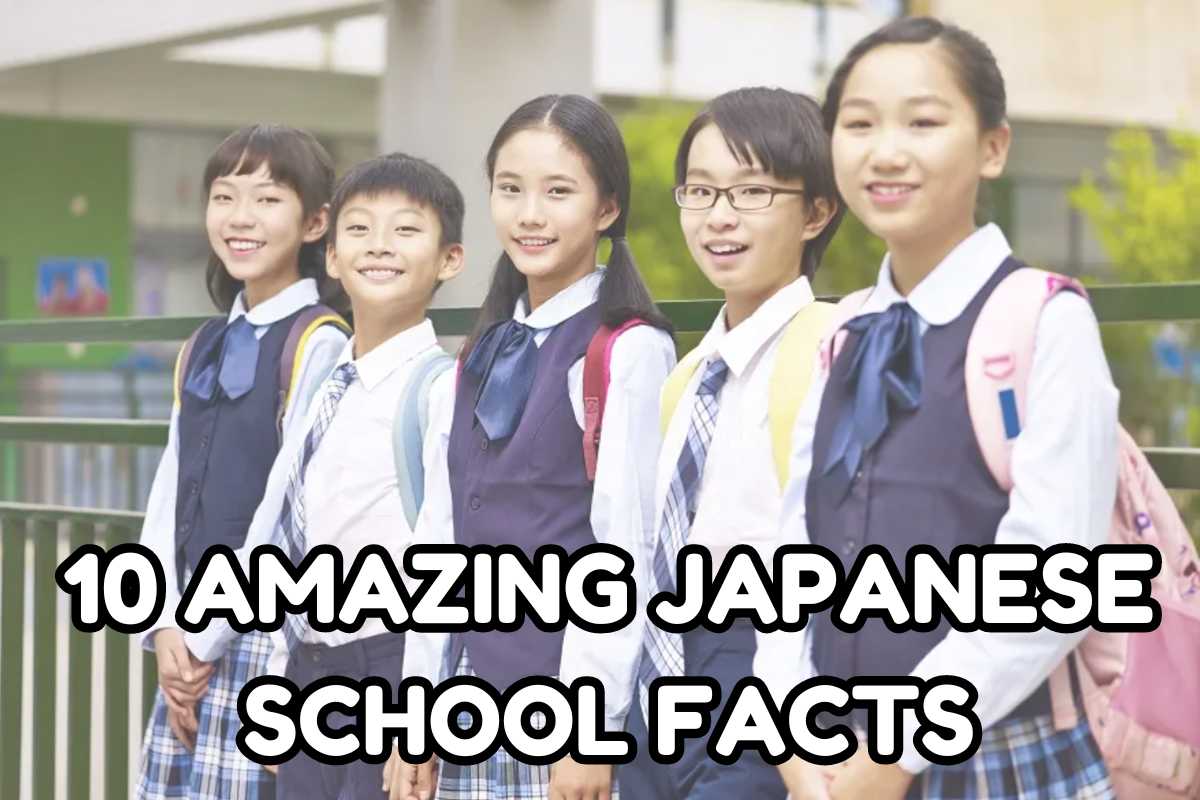Japanese swords are some of the finest examples of craftsmanship in the world and powerfully display the heritage and prestige of Japanese culture.
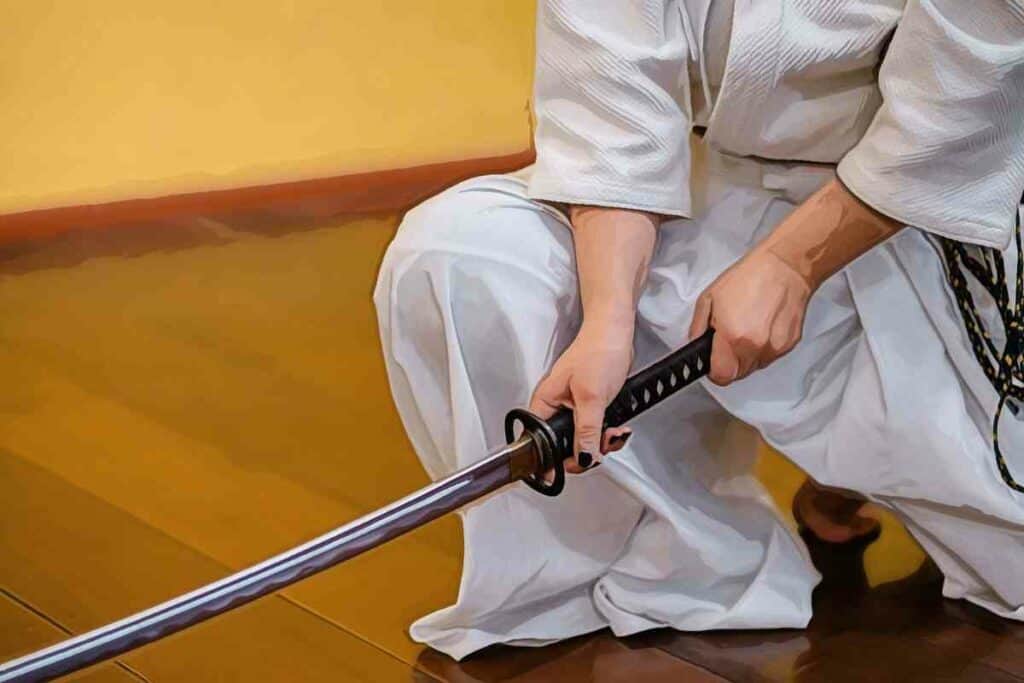
The knowledge and skills required to craft these swords have been passed down through generations, with only a few hundred master sword makers in the world today.
In This Article – We profile 7 of the best Japanese sword makers alive today and explore the features and craftsmanship you should look for if you want to make a Japanese sword your own.
Table of Contents
About Japanese Swords
Nihontō (日本刀) are the traditional Japanese swords worn by Samurai and other classes in Japan.
Swordmaking in Japan goes dates back almost two millennia, with a rich heritage that has been extensively shaped by the Samurai nobility and Shinto religion.
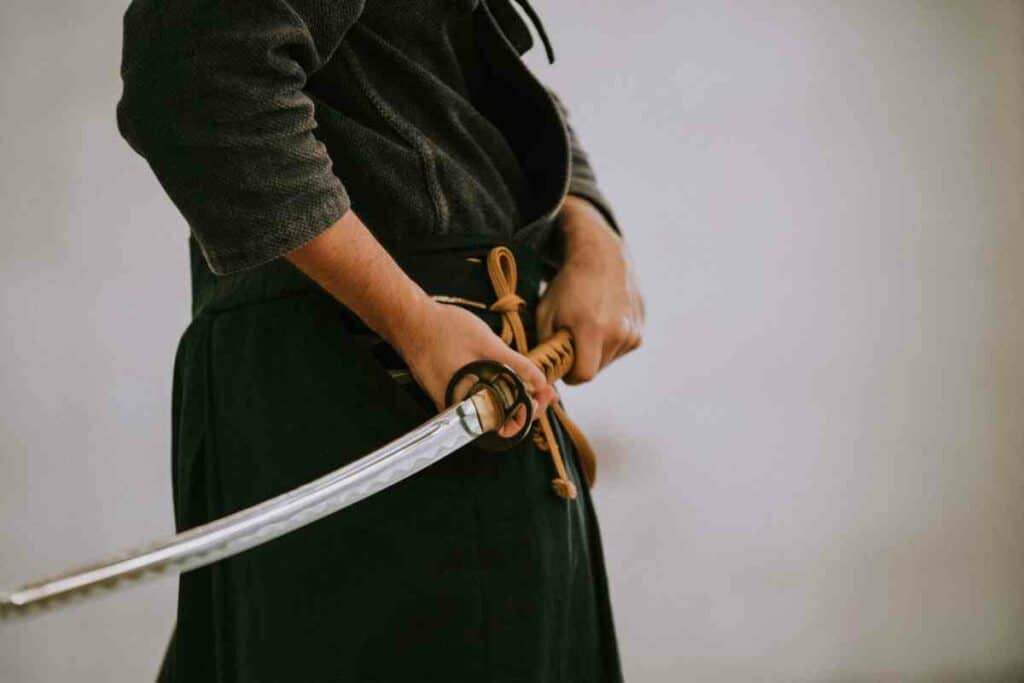
If you’re not from Japan, you are probably thinking of the long, elegantly curved swords that are known as katana.
However, Japanese swords are diverse, reflecting the various fabrication techniques and applications in which Japanese swords were used in Japan’s medieval and early-modern history.
These swords also possess rich symbolism, exquisite craftsmanship, and priceless cultural value that has led to them being admired around the world.
Eager to discover the vibrant culture of Japan? Turn to Japan Objects Store, our esteemed partner, for all your travel needs and a selection of truly Japanese items.
They are treasured antiquities of national importance and highly collectible, with swords like the Samurai Tachi being purchased for as much as $100,000,000!
Master swordsmiths are, therefore, in great demand from collectors who want to own their own bespoke swords.
[lasso type=”table” id=”51″ link_id=”7377″]
Types of Japanese Swords
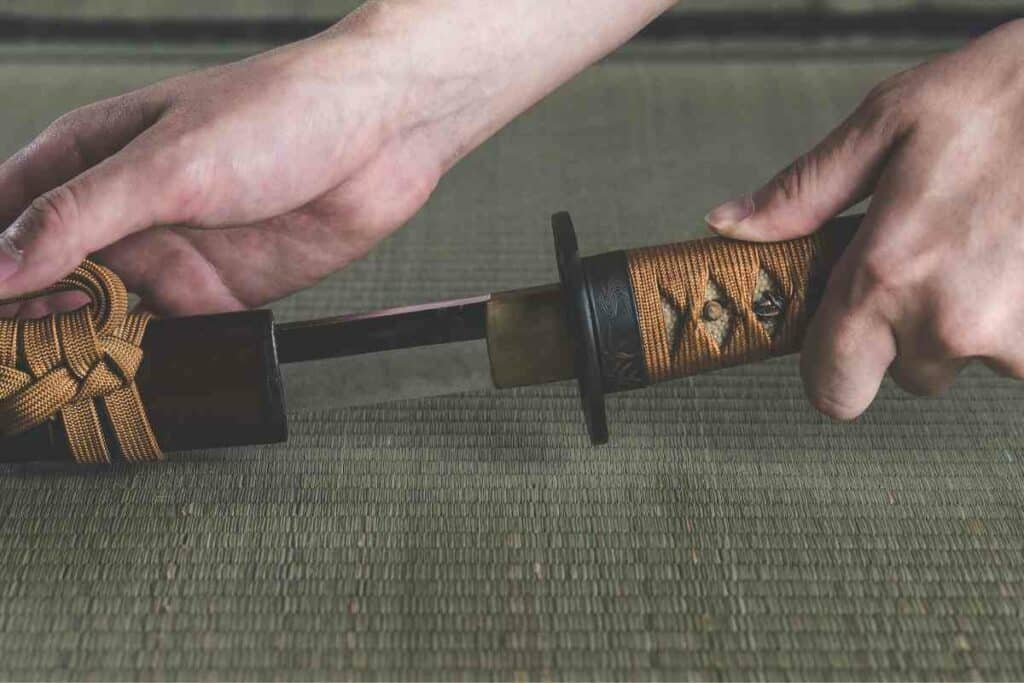
Japan has five legendary sword types which have been developed over 5 key eras of Japanese history:
- The ancient swords era, known as Jōkotō (上古刀) that ended around 900 A.D.
- The old swords era, known as the Kotō (古刀) period, from 900 A.D. to 1596.
- The new swords era, known as Shintō (新刀), that spanned 1597 to 1780.
- The new, new swords era Shinshintō (新々刀) from 1781 to 1876.
- The modern sword-making period is known as Gendaitō (現代刀) and spans from 1876 to the present day.
Each type of Japanese sword has its own history and many myths surrounding how the master sword makers created and forged the design.
The five types are:
- The katana (刀): the most ‘mainstream’ of the Samurai swords. A katana sword has a long curved blade of up to 35.5 inches (90 cm) in length. Its handle can accommodate two hands for a graceful but powerful strike from a large distance.
- The tachi (太刀): a pre-15th century long sword design that is similar to the katana. The tachi was created with a longer blade so it could be wielded by a warrior on horseback. It is worn down the back.
- The odachi/nodachi (大太刀): a late 14th-century long sword with a blade length often exceeding 3 feet. These swords were used by field soldiers who had the room to make large sweeping movements, rather than combat at close quarters.
- The wakizashi (脇差): a much smaller ‘side sword’ that is between one and two feet in length (30 to 60) cm to accompany a katana. The wakizashi was introduced in the 17th century. The combination of the two swords is called ‘daishō’ (large and small).
- The tantō (短刀): a knife or short sword with a blade length of less than one foot (30 cm). These daggers could be single or double-edged. Tanto swords were often created as ornate and decorative pieces, showcasing the craftsmanship of the master who made them.
Modern Japanese sword makers
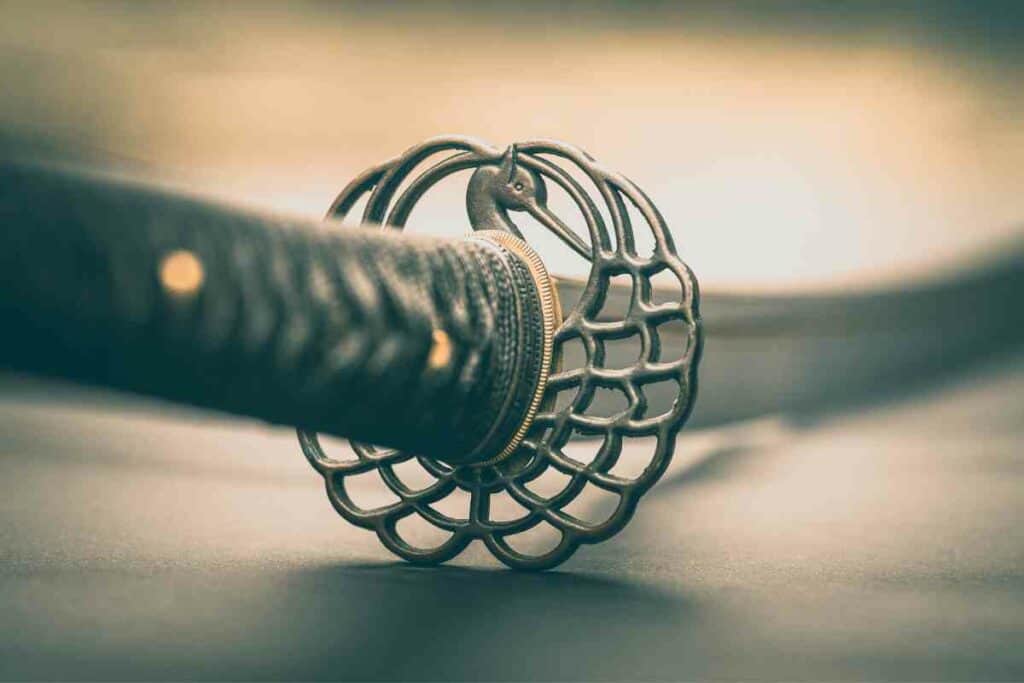
This ancient art is kept alive in modern-day Nippon by swordsmiths who have continued the traditions of master swordsmiths of old, including:
- Amakuni (8th century) the first Japanese master swordsmith
- Masamune Goro (1264 – 1343), probably the best Japanese sword maker that ever lived
- Hikoshirō Sagami Kuni Sadamune (1298 – 1349)
Swordsmiths and their swords are often classified by the ‘school’ or region their sword-making techniques come from.
Here are the leading schools which continue, under the direction of masters, to this day:
- The Sōshū School comes from Sagami Province which is now the Kanagawa prefecture. It is arguably the most renowned of the schools as it produced Gorō Nyūdō Masamune, one of Japan’s most famous sword makers.
- The Yamato School of Yamato Province (Nara Prefecture) is one of the oldest schools and was established in the capital of ancient Japan. The swordsmith Amakuni is considered the founder of this oldest school. Yamato school swordsmiths forged swords for monk warriors of the temples in Nara. Yamato swords are known for their deep curve, narrow width, a high central ridge, and a small tip.
- The Bizen School swords are known for their ornate detailing, dramatic curvature, and narrow tip and display qualities. This school of swordmaking originated in what is now the Okyama prefecture. This region produced exquisite swords because of its high-quality iron sand.
- The Mino School of Mino Province (Gifu Prefecture) has been a school of sword-making since the Kamakura period when it was ruled by powerful feudal lords. It grew to become one of the largest producers of Japanese swords with prolific production of katana which had varying styles and detailing.
- The Yamashiro School originated in the region that is now Kyoto Prefecture. In the year 794, the capital of Japan was relocated to Kyoto, and swordsmiths gathered there under Emperor Kanmu. Swords were made to order for regional rulers so this school developed an emphasis on aesthetics. They continue to be admired for their elegant appearance.
The best Japanese sword makers can only legally produce their swords by passing a national examination set by the Agency for Cultural Affairs (Bunka-Cho).
Licensed sword makers must complete a full apprenticeship of at least five years under a licensed master.
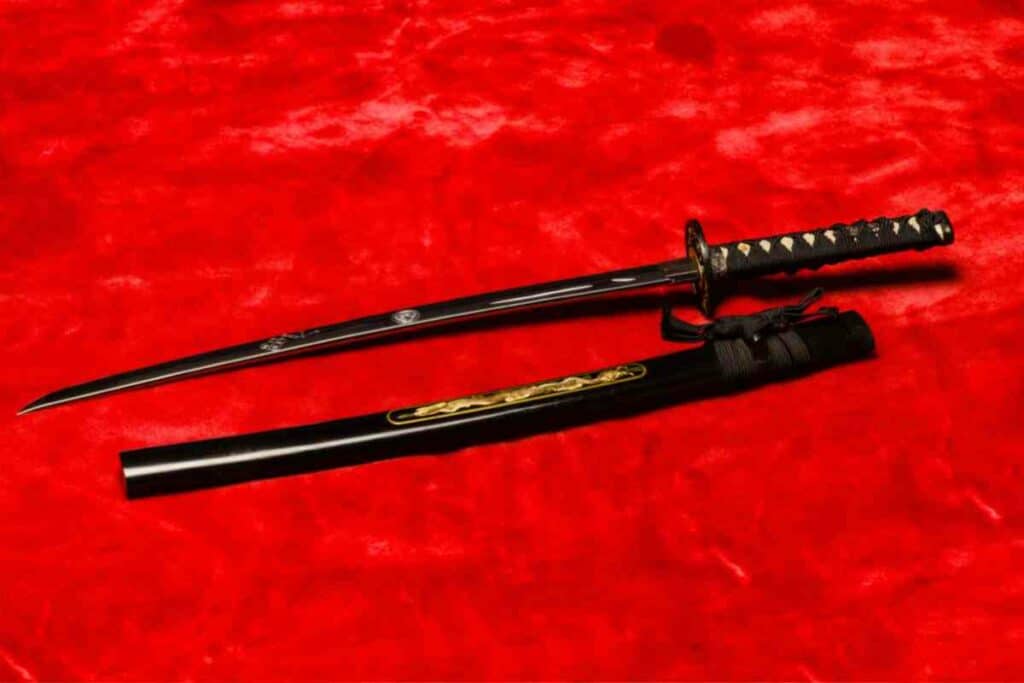
Contemporary Japanese sword makers can create modern innovative sword designs or study and replicate the old method to recreate iconic ancient styles.
The best Japanese sword makers are not only craftsmen but also historians and cultural curators who preserve an important Japanese tradition that has been passed down through the generations.
A team of artisans creates Japanese swords
The honored role of the sword maker is attributed to the bladesmith, but it takes more than seven different artisans to create a complete sword and scabbard.
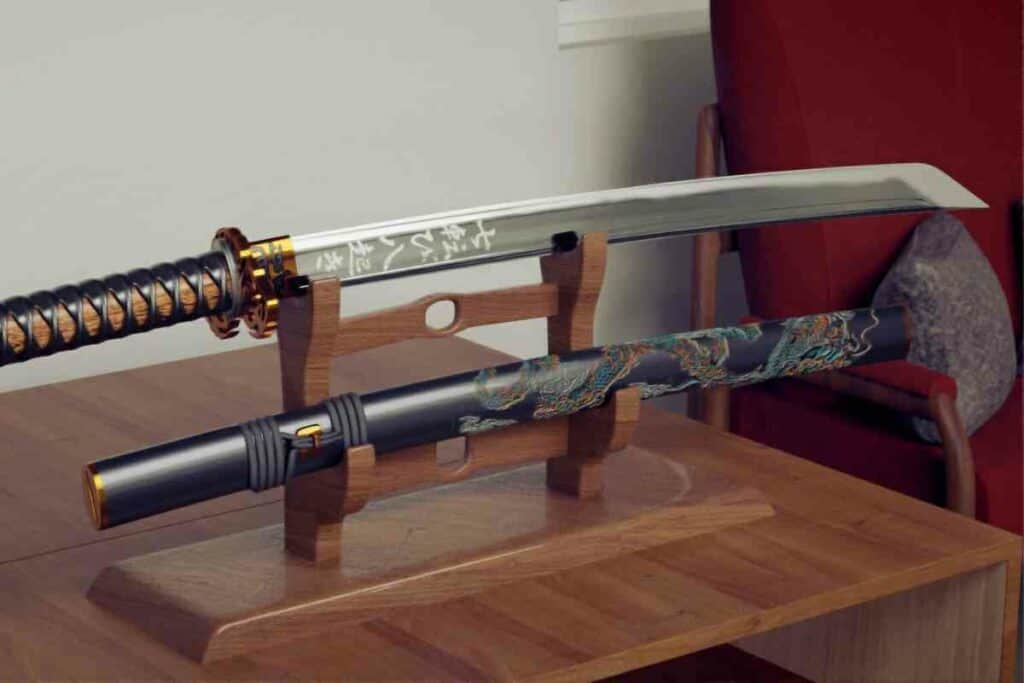
Though a sword maker masters all aspects of making the sword as part of their apprenticeship, the team usually includes:
- A goldsmith who makes the intricate gold inlay and detailing of the sword.
- A Saya who makes the scabbard of the sword.
- A polisher who refines the mirror-like lacquer finishes of the sword and scabbard.
Working together, these skilled craftsmen labor over the sword for months at a time, lacquering, polishing, and engraving the exquisite details of the sword.
Inferior or flawed workmanship is not tolerated, all must be the masters of their craft, and the honor of a beautifully crafted sword is shared between them.
7 best Japanese sword makers, leading masters of the 21st century
Out of the 200 to 300 swordsmiths who have the skills to make swords in Japan, only 30 swordmakers are full-time masters of the craft.
The skill and dedication of the seven master Japanese sword makers profiled here, make their swords extremely valuable.
In some cases, their swords have become national treasures, that cannot leave the country.
1. Yoshindo Yoshihara
79-year-old Yoshindo Yoshihara, a tenth-generation master sword maker, is probably the first name offered as the best Japanese sword maker.
He is famous for his skill and inventiveness as his championship and protection of centuries of swordmaking culture in Japan.
A Yoshindo Yoshihara Japanese sword is one of the most valuable modern Japanese swords, attracting collectors from around the world.
Expect to pay tens, if not hundreds of thousands of dollars to make a Yoshihara sword your own. His workshop in Tokyo, The Yoshihara workshop, is the Japanese capital’s only traditional swordmaking smithy.
From this base, Yoshihara trains up to 6 apprentices at a time in a grueling program of swordsmith training that takes at least a decade to complete.
Yoshihara is uncompromising about his craft, and everything about a Yohindo Yoshihara-crafted Japanese sword is unique.
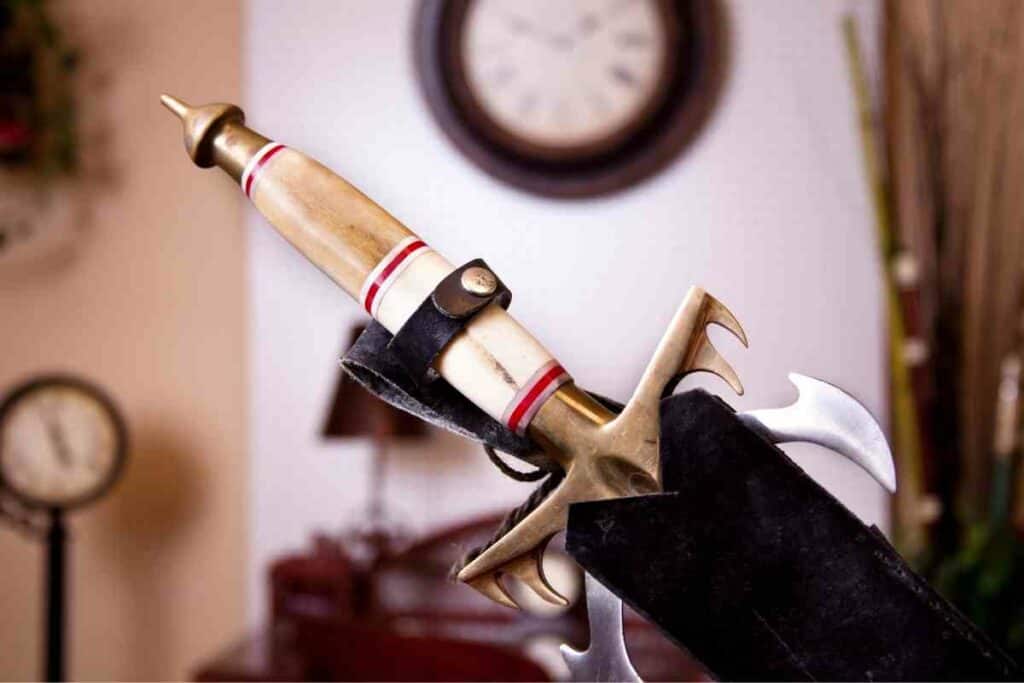
His encyclopedic knowledge and ancient expertise extend to the mastery of each aspect of crafting the perfect sword, including:
- the smithing
- creation of a scabbard
- and creation of the crest
Even the tools used to make each sword are hand forged and honed in the workshop.
Yoshihara is a reservoir of the ancient knowledge and craftsmanship of Japanese swordmaking.
He has authored numerous books on Japanese swords and exhibited his masterpieces at the Metropolitan Museum of New York and other world-class museums and galleries.
2. Kunimasa of Hyuga City
Ichiro Matsuba Kunimasa is one of Japan’s contemporary master swordsmiths, with a smithy in Hyuga City, Miyazaki prefecture.
He holds the highest ‘Matsuba’ honor of Japan’s Society for Preservation of Japanese Art Swords, meaning that his swords are ‘Mukansa’ (above judgment).
The exceptional craftsmanship of Kunimasa is exhibited and admired across Japan and worldwide.
His swords are frequently rated as masterpieces. This is a remarkable life’s work for a man who started out wanting to be an agriculturalist.
Kunimasa had a chance encounter with the master sword maker Kobayashi after completing agricultural studies in California as a young man. Kobayashi insisted that Kunimasa leave agriculture and become his apprentice.
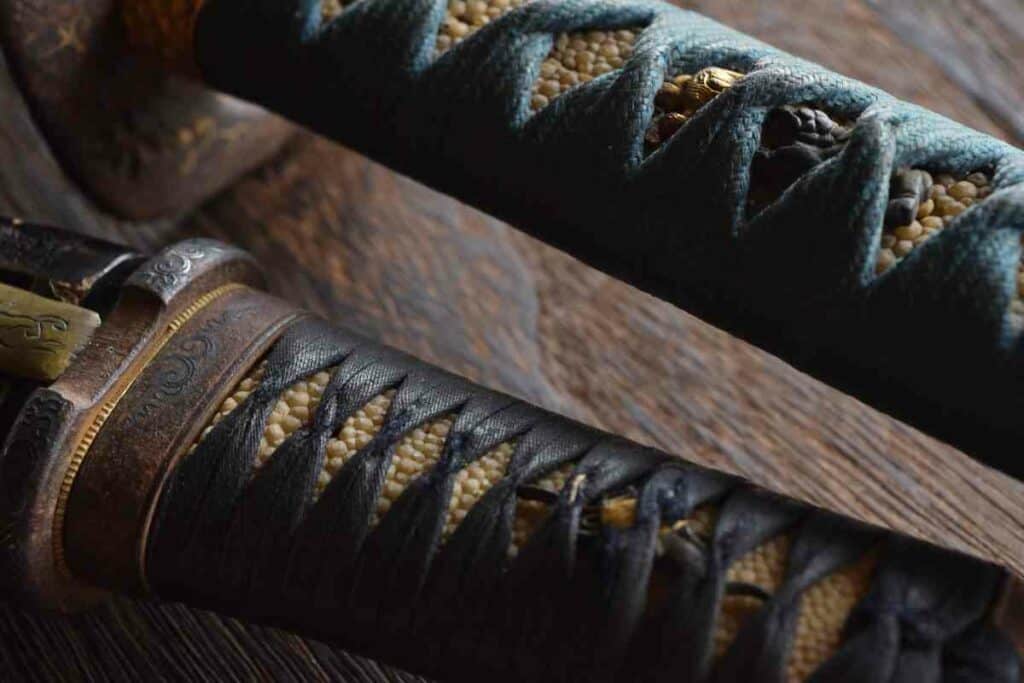
Kunimasa completed seven years of apprenticeship in the ancient craft of swordmaking in Okayama, opening his first shop in the 1990s.
His first swords were forged in the Nanbokucho Era (1336–1392) tradition.
The long graceful swords he made are called odachi, but Kunimasa has since innovated his designs to include katana and his own innovative designs.
Kunimasa has developed several modern sword designs including his signature “double Hamon” blade.
This unique sword is crafted with a special clay treatment that creates patterned detailing on the glistening carbon steel. He has published a book, Contemporary Japanese Swords, that features his breathtaking designs.
3. Tsunahiro Yamamura
Tsunahiro Yamamura is a Kamakura-based swordsmith who is the master of the Masamune Sword and Blade Workshop.
He is the current holder of the honorable ‘Tsunahiro’ (Masamune XXIV) title which he inherited from his father at age 29.
With this title, he continues the 700-year Soshu blade-making tradition that can be traced back to its medieval founder, Goro Nyudo Masamune.
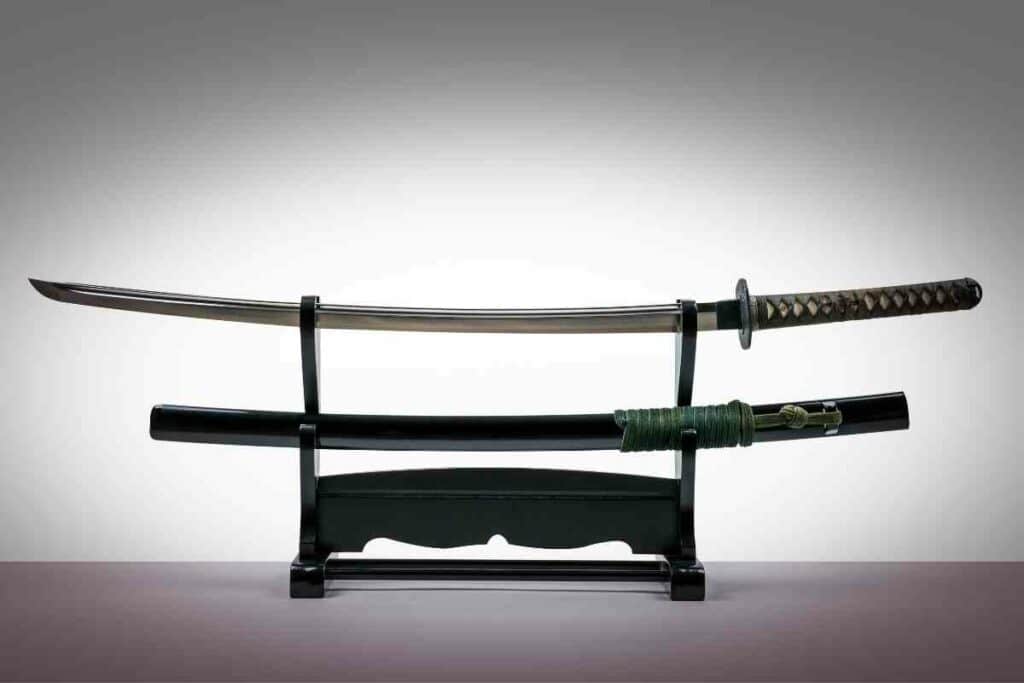
Yamamura’s Soshu traditional swords are distinctive because they are fired to extremely high temperatures for a much more pronounced Hamon.
To protect the blade from becoming brittle, Yamamura uses soft and hard metals.
Tsunahiro Yamamura received his training in Soshu-school swordmaking as the apprentice of a swordsmith at the Yasukuni Shrine, with further work in Chigasaki, Kanagawa.
Masamune XXIV makes fine knives, scissors, and shears alongside great swords that are renowned for their dignity and grace.
Tsunahiro (Masamune XXIV) believes that the first thoughts on seeing a sword should be that it is ‘beautiful’ rather than it is ‘sharp’.
Read Next 📖
4. Fusahiro Shimojima
The enigmatic Fusahiro is one of Japan’s leading katana swordsmiths, created legendary made-to-order swords that are sold across the world with prices starting at $30,000.
At the relatively young age of 44, Fusahiro has joined the ranks of Japan’s top 30 full-time master sword makers working out of a studio in Saitama in east-central Honshu.
Fusahiro Shimojima first became captivated by Japanese swords in his teens when he saw an 800-year-old sword that was in pristine condition.
The exceptional craftsmanship of the sword inspired him to become a katana swordsmith.
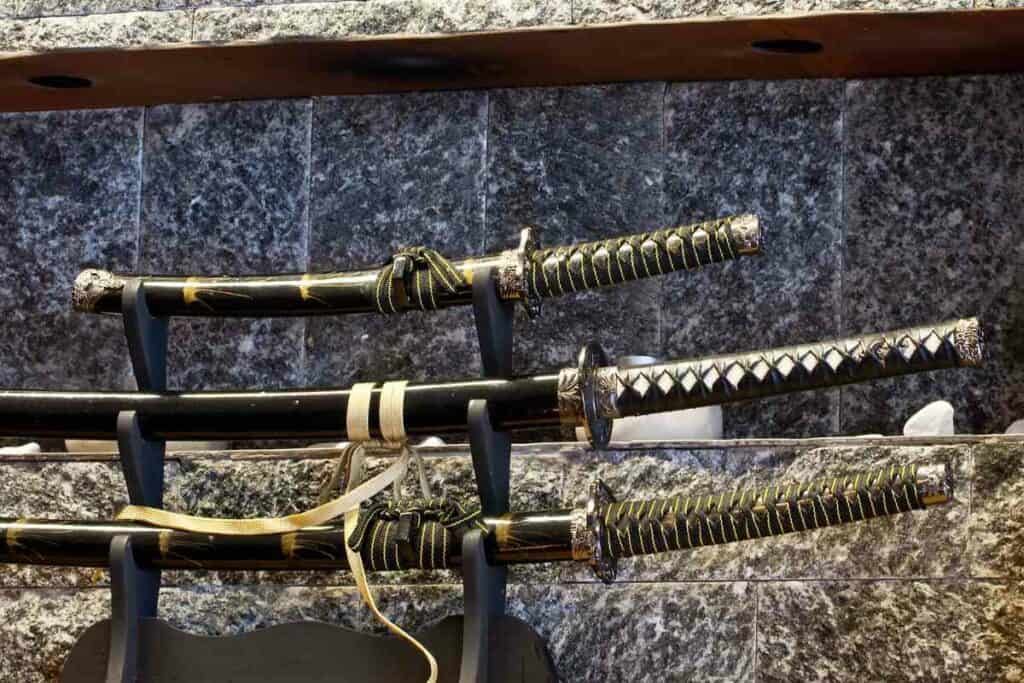
He trained in making Samurai swords for over 24 years, devoting himself to mastering the traditional techniques required to craft an exceptional sword.
Fusahiro’s mamori katana, is a superb ornament that is perfected through months of arduous forging.
Fusahiro uses iron sand to create well-tempered solid steel refined through multiple forgings to become ‘tamahagane’, the highest quality.
This short video segment about Fusahiro provides insight into the skill and dedication of a Japanese swordmaker:
5. Yuya Nakanishi
Swordsmith Yuya Nakanishi started forging swords in 2005, after becoming inspired by the beauty and mystery of the Japanese swords he saw in museums.
This Kyoto-based katana maker trained under leading swordsmiths for over 15 years to become an accredited master in his own right and has wasted no time in producing his own swords, with a 1-year waiting list of buyers.
39-year-old Yuya Nakanishi demonstrates his skills and accepts visitors to his mountain Kyoto forge, the Masahiro Tantoujou Sword Forge.
He also teaches novices how to forge their own small knives from the same Tamahagane steel used to make a katana.
Nakanishi has even forged swords for Panasonic, using the stainless steel used in their razors. He considered this one of his most interesting projects!
6. Korehira Watanabe
Korehira Watanabe is a veteran of modern Japanese swordmaking with over 40 years of experience in the most advanced craftsmanship.
He is known for his obsession with the Koto sword, an almost mythical Samurai sword from the Heian and Kamakura eras (794-1333 AD).
Watanabe has dedicated his craft to replicating this sword, which no longer exists and has extremely limited documentation.
In the process of recreating the Koto sword, Korehira Watanabe has produced some of Japan’s finest swords.
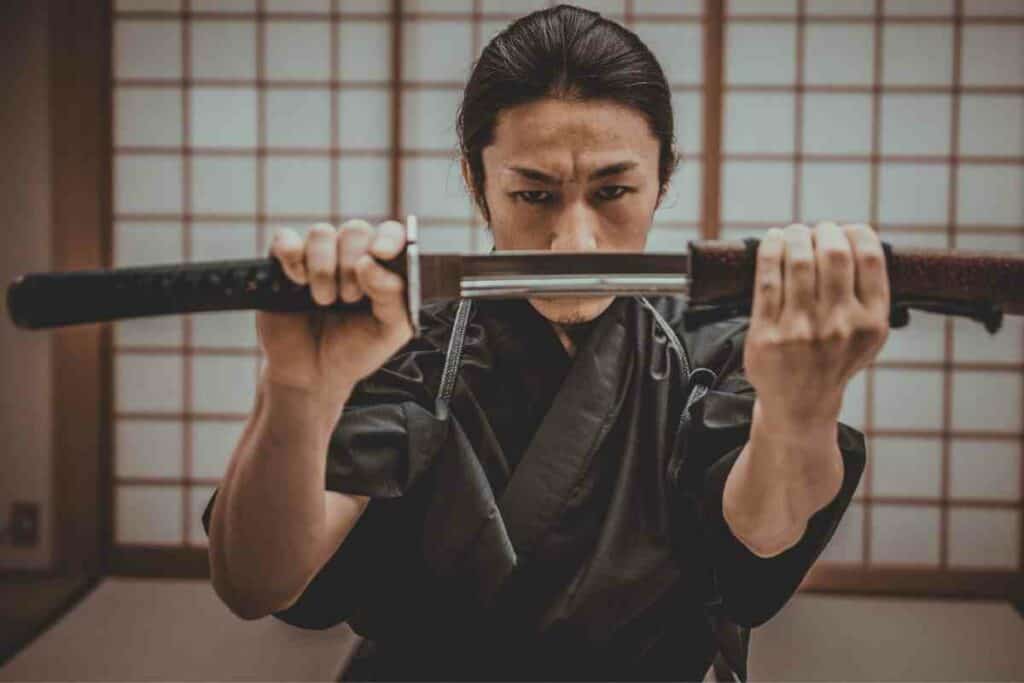
Watanabe is respected for his deep understanding of Japanese culture and history, living and dressing in a manner that is evocative of the Japan of previous eras. His studio is filled with charcoal ashes and various tools he has created for his craft.
A Korehira Watanabe sword costs tens of thousands of dollars, and though he commences on 10 swords each year, only three make the final cut.
7. Watanabe Shigehira
Watanabe Shigehira is a swordsmith who forges swords in Uonuma village, Nigata.
Shigehira commenced his apprenticeship in the Soshu school of swordsmithing at age 23.
He trained under the late Miyairi Akihira (1927 – 1977), an extremely famous swordsmith who was designated a Living National Treasure.
Shigehira’s swords have been influenced by 14th-century Nanbokucho-style swords that are known for their length and intricacy. They are exhibited widely and have won numerous awards in Japan.
Buying a Japanese Sword
The strength and beauty of Japanese swords make them some of the world’s most valuable collector’s items.
Collectors buy Japanese swords because of their beauty and history or as an investment, as the best swords (with intact provenances) increase in value as time passes.
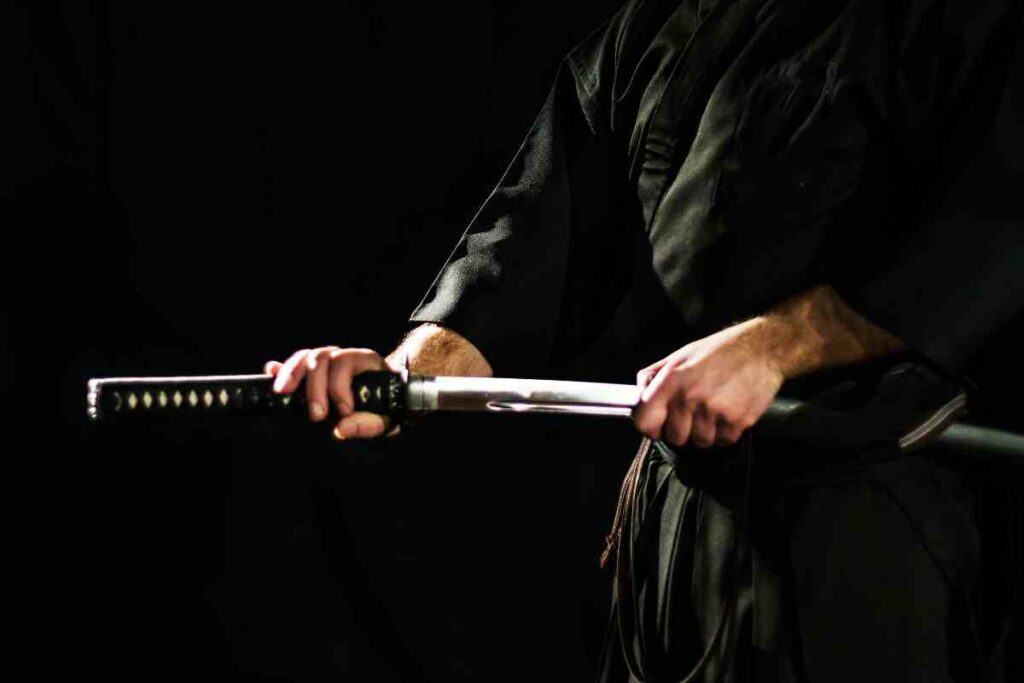
But Samurai swords are much more than weapons. They impart power and authority and their beauty and graceful proportions are always pleasing.
And the handmade crafting of a katana means that each sword has its own unique identity and story.
Even if you don’t have the budget and patience to have a master swordsmith make a Japanese sword for you, you can still own a Japanese sword of your own.
Cheap Japanese swords
If you want a Japanese sword for display only, you may be able to select one of the cheaper, mass-produced swords.
For around $150, expect to get a katana that is made from carbon steel with a full tang, and a weight of less than three pounds.
Take a look at these great value Japanese swords to get your collection started or decorate your home:
TRUEKATANA Blue Katana
This handmade Japanese Samurai sword is made with 1045 carbon steel and comes with a blue blade and scabbard.
Wuder Handcrafted Katana
This beautiful katana is made with high-carbon steel and is clay tempered for strength.
Japanese Swords with Hamon
If you want an authentic katana, look for a Japanese sword with a Hamon, the tempering line that is visible in the blade of a handcrafted sword.
This detail, created with the application of clay, makes the cutting edge of the sword stronger than its spine.
These beautiful katana swords have an elegant Hamon.
MURASAME Katana Sword
This is an elegant katana with an authentic hand-forged Hamon detail along its blade.
Lyuesword Handmade Katana Sword
100% hand-forged and hand-sharpened Japanese sword with clay-tempered Hamon detail, suitable for use.
Swordsrain Handmade Katana
This Japanese sword features clay-tempered T10 steel with authentic Hamon detail.
Japanese swords for cutting practice
These swords are called ‘beater’ swords because they can withstand heavy cutting use.
Though they are only a few hundred dollars but have tough blades that have been expertly tempered to cut through anything.
If you want to actually cut something with a Japanese sword, the last thing you need is an ornamental or valuable katana that could become damaged.
Monotempered Japanese swords are not authentic but give you the weight and feel of cutting through bamboo in your backyard, just like an Iaijutsu master!
Have a go at wielding a Japanese sword with these fun beater katana:
Lyuesword Japanese Samurai Katana
This hand-forged, clay-tempered cutting katana, is well-secured with a full tang.
YJ COOL Samurai Katana
This strong carbon steel and iron sword has been hand folded and forged 15 times for superior strength and durability. It is secured with a full tang.
Buying an Authentic Japanese Sword
Expect to pay at least $1500 for an authentic Japanese sword. These swords are not master-made but made in Japan by manufacturers.
They are more refined than the cheaper swords but still incomparable to a sword made by one of the masters we have featured.
GLW Japanese Uchigatana Samurai
Beautifully crafted katana sword hand-forged and clay-tempered with T10 Steel and ancient quenched hardening and hand polishing.
It is full tang and can be used for practice.
CAS Hanwei SH2465 Koi Katana Sword
This expertly crafted usable katana is hand-forged with a strong carbon steel blade and exquisite detailing on its black and white mounting.
What are the parts of a Japanese sword?
Japanese swords consist of a blade and its mountings. Parts of a blade include:
- The Shinogi: a ridge running down the middle of the sword.
- Kissagi: a slightly rounded area at the very tip of the katana blade.
- The Mune: the blade’s back edge.
- The ji: an area of soft metal in the back of the blade.
- Ha: harder metal at the front of the blade.
- The Hamon: the boundary between higher and lower temperature tempering that is unique to each sword maker.
The mounting or handle of the sword includes:
- The Tsuka: the sword handle.
- Kashira: a cap that sits at the top of the Tsuka.
- The Mekugi: wooden pegs that secure the tang of the blade to the sword’s hilt.
- The Samé: a covering of the hilt of the sword that is made from ray skin.
- The Menuki: a unique gilded charm that covers the Mekugi and is wrapped in the Ito.
- The Ito: a silk covering of the Samé that enhances grip.
- The Tsuba: the sword guard between the handle and blade.
- The Habaki: a metal collar between the tsuba and the blade.
The sword is housed in a scabbard, called a Saya. Traditionally, the Saya can be made from bone, wood, or horn.
Best Japanese Sword Makers FAQs
What is a full tang?
Are swords legal in Japan?
During the implementation of the ban many swordsmiths lost their living and turned to forge farming implements and other tools. This is a big reason for the reduced number of master swordsmiths in present-day Japan.
Rounding up
Japanese sword-making is a big topic that is almost impossible to exhaust. The master sword makers of Japan are a rich source of Japanese heritage, and the swords they produce are national treasures.
If you’re interested in Japanese swords, starting a collection will deepen your knowledge and experience in this fascinating area of Japanese culture!
- 10 Amazing Facts About Schools in Japan: Unique Traditions and Educational Practices
- Where can you see snow monkeys in Japan: Best locations and viewing tips
- What Are Ashiyu in Japan: Relaxing Foot Baths in Hot Springs
- Tatemae and Honne: Navigating Japan’s Dual Social Codes
- Inemuri Practice in Japan: Acceptable Napping in Public Spaces
- Japanese Wedding Traditions (Venue, Dress & Food)





